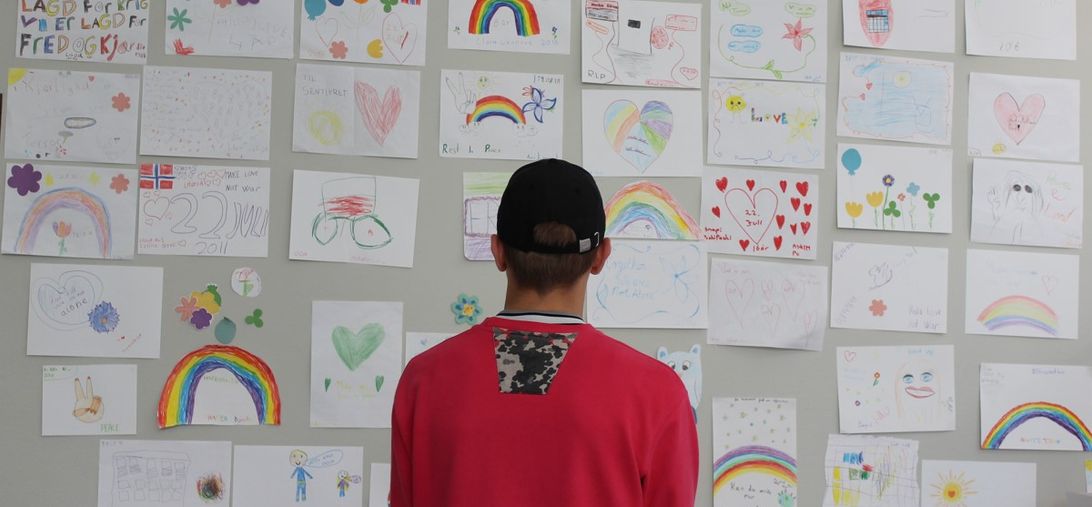Children at the 22 July Centre
Since its opening in 2015, families with children have found their way to the 22 July Centre. Some parents visit the centre to tell their children about what happened on 22 July, while others come without considering the needs of the children or that the exhibition may not be suitable for the very young.
In 2017, the 22 July Centre began developing tailored offerings for families with children. Through various initiatives, we aim to facilitate the communication of 22 July in a way that is suitable for children and their cognitive abilities.
The resource below is designed for children between 8 and 13 years old, but can also be used by younger age groups. You can find it available on a large screen in the second floor of the exhibition at Teatergata 10, with both images, text, and audio narration of the resource's content.



